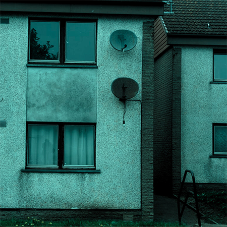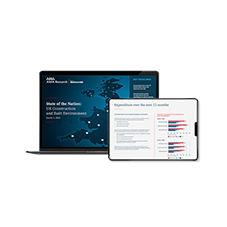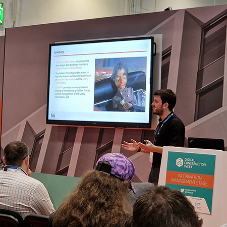Finishes and Interiors Sector (FIS) sustainability champion Flavie Lowres talks about the rise of the sustainability agenda and how FIS has set up a Sustainability Leadership Group to provide guidance, and support to members and the sector and respond to this agenda.
In 2015 at the UN Climate Change Conference (COP 21), world leaders reached an agreement to set long term goals to reduce greenhouse gas (GHG) to limit the global temperature increase to 1.5C – this is called “the Paris Agreement”. In response to the Paris Agreement, the UK Government set the legally binding Climate Change Act to reduce carbon emission by 100% by 2050.
The construction industry is very large in terms of number of people it employs, but also in terms of environmental impact. It is estimated to consume 50% of resources extracted, to generate 40% of all wastes produced and to be responsible for roughly 50% of GHG emissions in the UK. It therefore needs to act in order to support the UK in meeting its emission reduction targets.
In the last couple of years, sustainability has been rising fast on the agenda of most organisations and in 2021, FIS set up the FIS Sustainability Leadership Group. The aim of this group is to provide guidance on what sustainability means for the sector and to provide the necessary support to members to upskill, understand and respond to this agenda. Outputs of this group can be found at: https://www.thefis.org/knowledge-hub/sustainablility/. In particular, FIS has partnered with the Supply Chain Sustainability School and worked with its members to create a learning pathway on sustainability. This free resource is aimed at members who wish to gain a basic understanding of sustainability.
Sustainability is not well defined, and it can be hard to know what an organisation needs to focus on. The FIS Sustainability Leadership Group has identified the following topics as most relevant: net zero, circular economy, packaging, social value, health and wellbeing and resource efficiency. There are many discussions in the industry around the net zero agenda and circular economy.
Net Zero can be considered at organisational level or at building level and focuses on the need to reduce emissions rather than the offsetting of emissions. In the absence of Government guidance on the approach that needs to be taken, several industry groups have come together to acknowledge that the sector needs to change. The Climate Commitment published by the Better Building Partnership (BBP) has been signed by 37 real estate owners, which collectively own more than 11,000 properties, including Crown Estate, Grosvenor and British Land. The commitment recognises the need to calculate organisations’ greenhouse gas (GHG) emissions, which are split into scope 1, 2 and 3 according to the GHG protocols, as well as operational and embodied carbon emissions of assets. These organisations recognise that the measurement and reduction of such emissions need to involve collaboration and input from their supply chain. Grosvenor, for example, has published its “think zero – our pathway to a better future” where it lays out its ambition to reduce the carbon emission of the supply chain by setting a target to have 40% of its suppliers to have science based targets by 2030. It has also set a maximum target of 500 kgCO2eq /m2 of embodied carbon from 2025 for its developments.
Real estate owners are not the only ones which have set ambitious targets. Many of the tier 1 contractors have made commitments to reduce emissions. These include Willmott Dixon which has set its 2030 ambition to be a zero-carbon company (without offsetting), generate zero avoidable waste, halve the volume of water it uses on projects and deliver environmental net gain on all projects. Morgan Sindall is another tier 1 contractor that has made a clear commitment. It has committed to reduce its scope 1, 2 and 3 emissions by 60% from its 2019 baseline. It has also committed to work with its supply chain (targeting £1bn by spend by 2030) to collect its carbon data.
The message to the industry is getting clearer with regards to net zero as it is becoming more and more important for organisations to start measuring and reducing their GHG emissions in order to be able to respond to their clients’ request for carbon data if they wish to continue to trade. The level of commitment and the need for third party verification of the results will vary depending on the size of the organisation (although there is no set criteria at the moment).
In addition, the measurement of the whole life carbon of buildings/projects is also becoming more important. In March 2023, RICS launched the consultation of its revised professional statement for whole life carbon. This document is likely to become the recommended methodology for the UK to measure the whole life carbon impact of buildings and projects (including fit-out projects). While there are currently no mandatory requirements to measure whole life carbon, there are more clients’ requests and organisations, such as the Greater London Authority, have set requirements to measure and report it. The Environmental Audit Committee has also made recommendations to the Government to include the requirement for measurement in Building Regulations, it is therefore only a matter of time before it becomes a requirement. The measurements are often carried out by architects or contractors and rely heavily on data from manufacturers. There are databases of generic data that can be used where there is no specific manufacturers data, however, there are more and more requests for product manufacturers to provide their product data, called environmental product declaration (EPD).
Information on net zero can be found on the FIS website. The FIS Sustainability Leadership Group will continue to work to provide information and guidance on this topic and other sustainability related ones.
Related Blog Articles



crop192.png)












